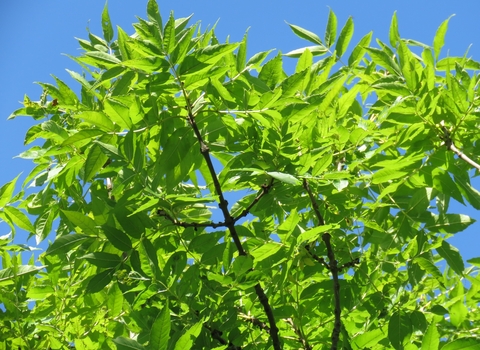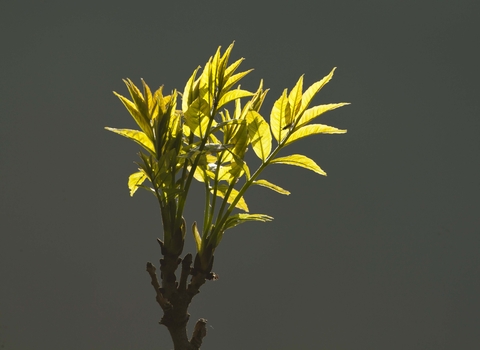
Ash by Brian Eversham

©Mark Hamblin/2020VISION
Ash
A common tree, ash is familiar to many of us for its autumnal bunches of winged seeds, called 'keys'. It can be found in woodlands and prefers damp and fertile soils.
Scientific name
Fraxinus excelsiorWhen to see
January to DecemberSpecies information
Category
Statistics
Height: 15-35mCommon.
About
In Scandinavian mythology, ash was the 'tree of life' and was regarded as a healing tree in the UK; today, however, ash is sometimes considered a 'weed'. It is a tall, broad tree that is both tough and fast-growing, and manages to colonise areas easily, taking up space where other trees have died or fallen. However, it is a good forest tree as it lets light reach the floor, allowing other plants to flourish, such as Wild garlic and Dog's mercury. It is particularly common in the north and in Wales, where it favours damp and fertile soils in cooler conditions.How to identify
Ash has compound leaves (made up of seven to twelve leaflets); large black buds; and bunches of ash 'keys' - winged seeds that disperse in the autumn.Distribution
Widespread in UK.In our area
Ash dieback is having a profound affect on many of our woodlands, especially those that contain large numbers of ash trees.
Did you know?
The wood of ash is both strong and flexible, and withstands shock well. For these reasons, it is often used for sporting equipment, such as oars, hockey sticks and snooker cues.Ash dieback is having a profound affect on many of our woodlands, especially those that contain large numbers of ash trees.
